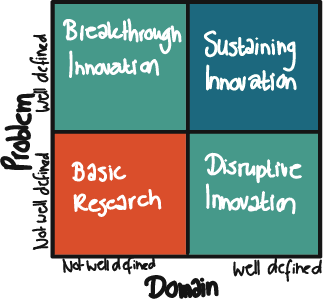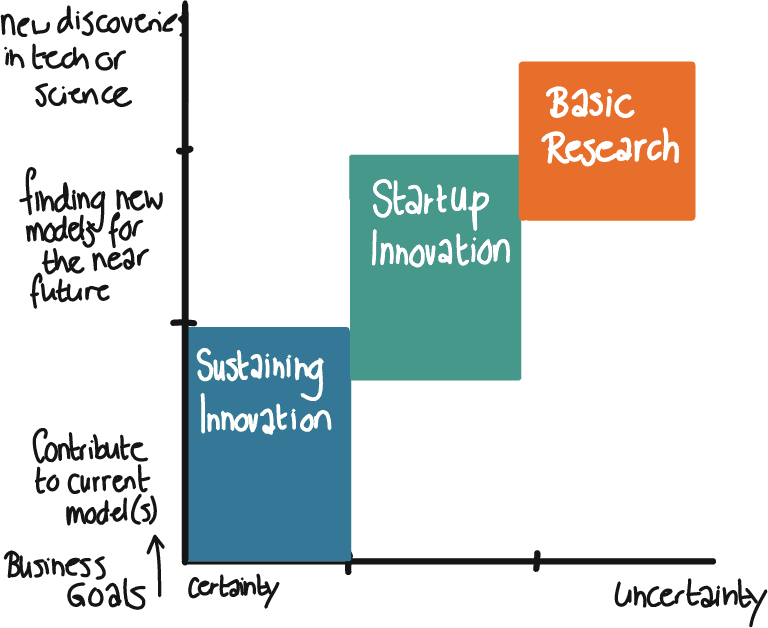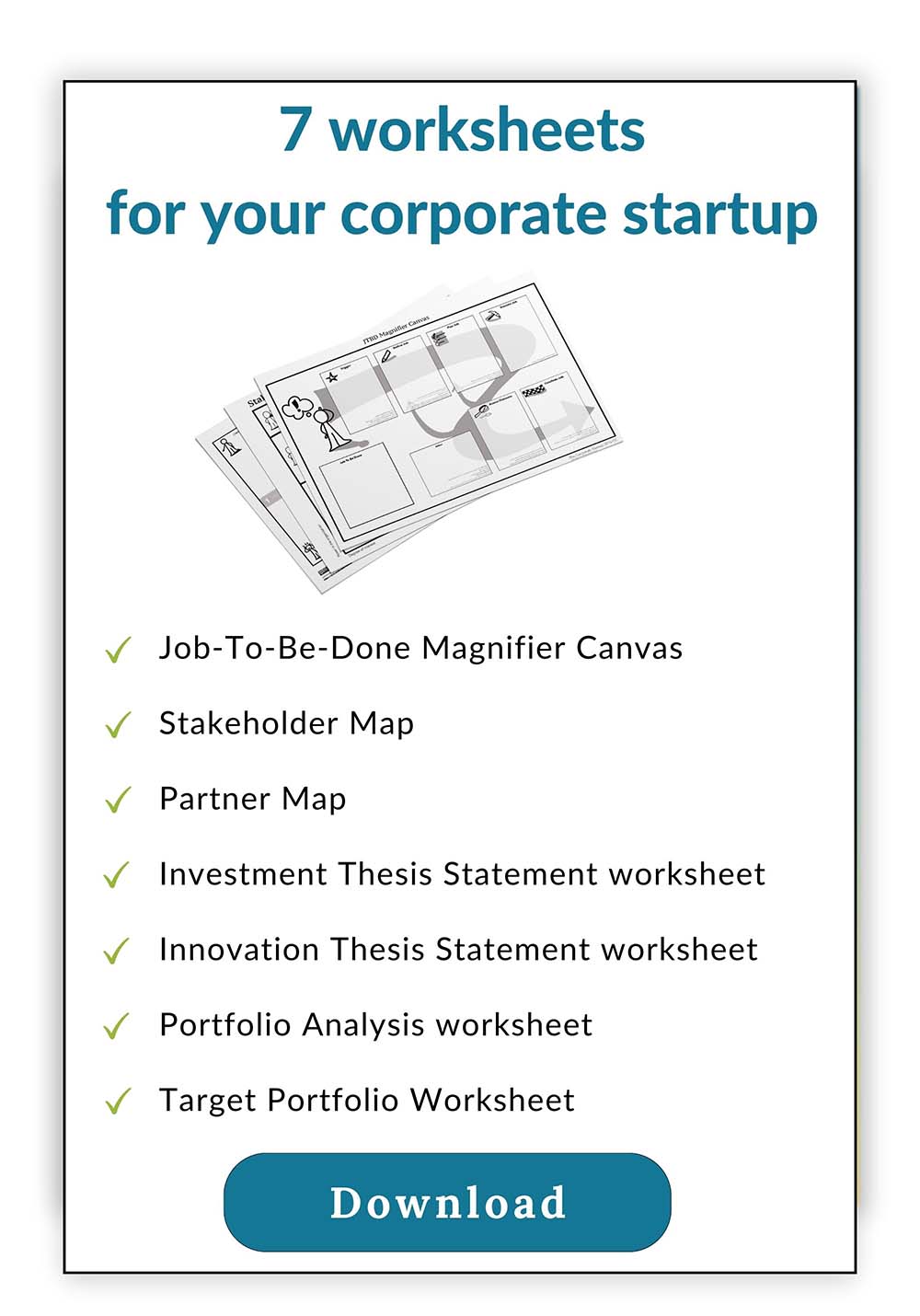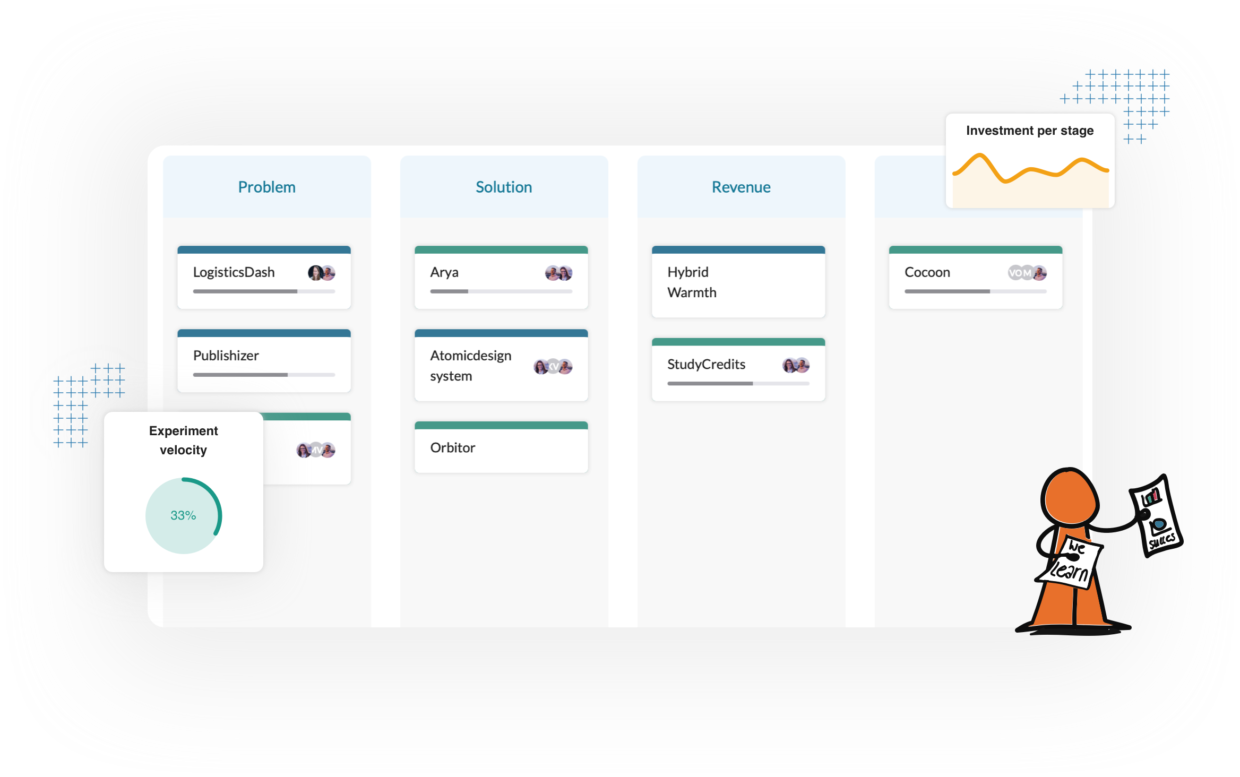The innovation management matrix explained
Table of Contents
To properly manage innovation, we need a new way to identify the different types of innovation.

When looking at the innovation maturity within a company, the existence of different definitions for innovation is an important criterion. The acknowledgment that there are multiple types of innovation and we should treat these types differently. Because we all agree that innovation is no longer to be treated as a ‘catch-all’ phrase.
To not thread innovation as a catch-all phrase, it is important to categorize innovation. Categorizing helps in making the right decisions or actions in certain situations. This is where an Innovation Matrix comes into play.
What is an Innovation Matrix?
An Innovation Matrix is a visualization of how you can easily identify the different kinds of innovation based on whatever goal is necessary for a certain perspective. For example, understand how to accelerate innovation, understand where to innovate, understand how to manage innovation, etc.
Esther Gons – author of The Corporate Startup
An Innovation Matrix can be used from different perspectives and elements to categorize on:
- To determine the origin of innovation.
- To determine the strategic relevance
- To determine what governance system to use.
The different perspectives have different reasons to identify different types of innovation. One is to be able to pursue different types of opportunities. Another is to be able to create a balanced portfolio and innovation strategy. And a third reason is to be able to manage innovation.
Since there are different reasons to identify different types of innovations, there are also different matrixes to define these different types of innovation.
The problem is that we regularly use these different matrixes interchangeably. And no matrix exists to define the different management systems needed. To make innovation work, that is precisely what we need.
Innovation matrixes currently in use
One of the well-known matrixes is the 10 types of innovation model. This model identifies types of innovation and groups them around themes. It is used by students and companies across the world to pursue new opportunities. Or as they say themselves “It provides a way to identify new opportunities beyond products and develop viable innovations”. It is a framework used for pursuing innovation.
For years companies have used the horizon model to create a balanced portfolio and innovation strategy. Recently there is a switch to different matrixes since time seems to have caught up with the McKinsey model. One of the newer models that is used widely in building an innovation strategy is the one Gary Pisano describes in this article. This matrix helps you to consider the different types of innovation regarded from the current business model of your company and the technologies that your company has capabilities in. It gives a clear framework on how to consider the different types for your company from the perspective of creating an effective innovation strategy.
But what if we look at it from a management or governance perspective. Within a company, every procedure, process, compliance rules, legal processes and financial processes are rooted in the principle of enhancing and optimizing the current core business models. A very logical thing, because this is how money is made. New projects and endeavours are judged from the risk they pose, the financial cost of development and the financial return it will add to the company. All governance is there to enable growth, optimisation and cost-effectiveness of existing business models. It is based on improving operational excellence. Any risk can be accounted for with reasonable accuracy, and managed.
Identifying innovation types for the purpose of properly managing them.

There are several types of innovation that work very well within the core governance of operational excellence. All innovation that adds to, improves, or makes the current models of your company more efficient, or what Greg calls sustaining innovation fits. This innovation can be managed from within the current governance and accountancy models of ‘operational excellence’. Even though for some innovation you would like to adjust timeframes or optimise processes (think of digitalisation) it does work quite well with the current system since it is perfectly aligned with the goal of growing and optimising the current model(s).
With innovation that is pursued through basic research, or R&D, companies already have different governance in place. They agree that future benefits are uncertain and expenditures cannot be capitalised directly. Timelines and management are different and very often these labs are set outside of the company, or not even part of the company altogether (Universities, research facilities etc. for example) The goal of basic research is oriented towards new discoveries in technology or science.
There is another reason why some types of innovation need a different form of governance, however.
What innovation falls under what set of rules?

There is one type of innovation that does not work well with the companies core processes and rules. The Innovation that is looking into completely new markets, the innovation that pursues new business models. In Greg’s matrix, these would be the types of both disruptive and breakthrough innovation. These two types of innovation cannot be managed by known systems in the organisation.
Just as with basic research, they are risky investments with an unclear outcome and long timelines, but with a clear purpose to create new revenue streams. We ideally want these initiatives to be part of the company rather than moving them away from the resources they need along the way.
Hence the need for a separate system, one that dictates how to specifically deal with these types of innovation. A company-wide system for investing, managing, and innovation accounting that fits these types of innovation. I call this the startup rulebook.
To create such a rulebook, we also need to be able to clearly identify these types so that every stakeholder in the company understands what type of innovation falls under which system.
[convertkit form=2588626]
Managing innovation: the types we need to differentiate
For this reason, I would like to propose a new matrix to define innovation types. One that will allow for a unified and company-wide understanding of how to manage each type of innovation. One that tells every employee in the company which system applies when dealing with innovation.

With sustaining innovation, even if we set up more efficient processes, the current system works in terms of management. Since the goal of this innovation is to contribute to the current model
With startup innovation, we need to adhere to the startup workbook. For there are alternative rules in managing and accounting necessary to successfully deal with these. They need a system that deals with their specific risk, longer timelines and a new way of working. Their goal is to find new models something that does not align with the current system.
Let’s start using innovation types for the purpose they were designed for. Some are tools to let you think about innovation to pursue new opportunities. Some are there to help create or reconsider a strategy. This new matrix is here to help create company-wide clarity on what people should DO when interacting with innovation. To explain which system of management applies to which innovation initiative. Innovation is not a catch-all phrase, innovation matrixes shouldn’t be used for catch-all purposes either.

[convertkit form=5141483]
Setting up a dedicated management system for startup innovation is something that can be only done if there is a clear way of deciding what is what. Ultimately this is one of the necessary steps in professionalising innovation within your company. To learn what the other steps are, read The 5 conditions for professionalizing innovation.
[convertkit form=2602167]

Esther Gons is the award-winning author of The Corporate Startup & Innovation Accounting. Winner of the 2022 Golden Axiom Business Book Award, 2019 Golden Axiom Business Book Award, and the 2018 Management Book Of The Year Award. She is an expert in Innovation Accounting, Innovation Strategy and Portfolio Management.
